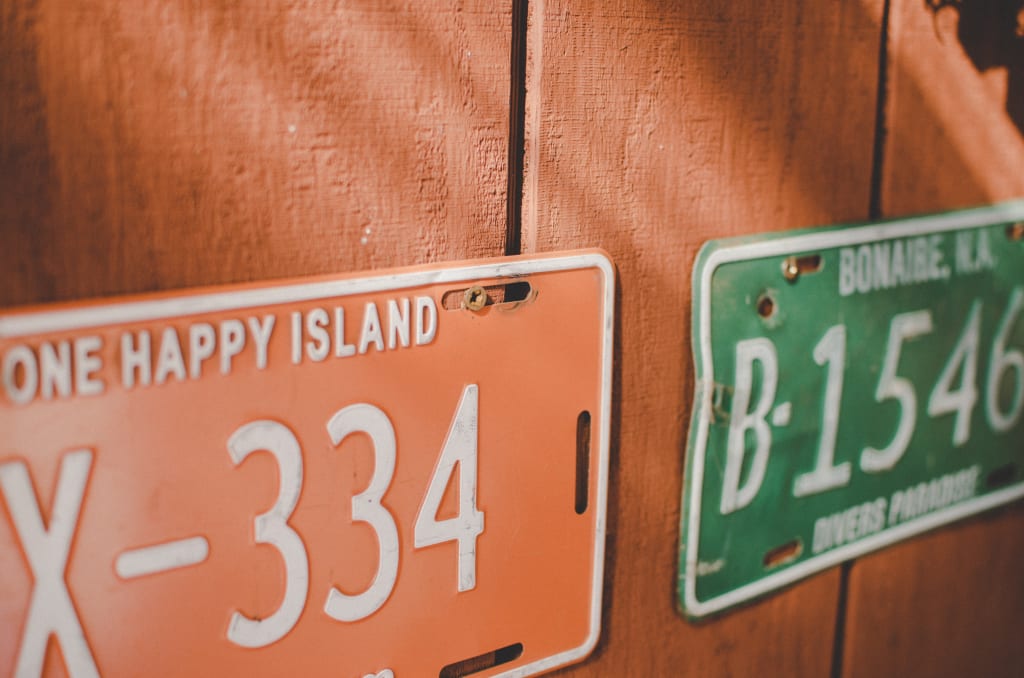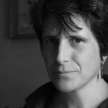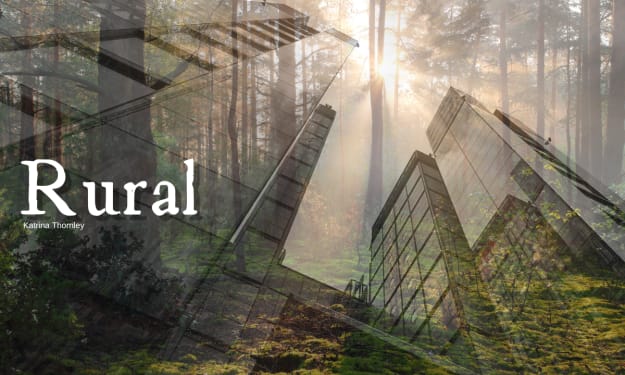Eyes Down: Numberplate Bingo Across 24 Countries
How Numberplate Bingo saw me through travels across 24 countries.

The quest ended on a Balkan road as a car darted across my taxi in the cheeky traffic of the congested city of Prizren. I glimpsed very little except the numbers of the registration plate which flashed past me like a small chorus line of tadpoles — 999.
I slumped back against the lumpy upholstery of the taxi seat and felt that I had achieved something extraordinary. This was the culmination of a search which had begun over three years previously on another car journey and had seen me through 24 countries, from Macedonia to Mongolia, Estonia to Kosovo.
It had started as the casual pastime of a long motorway journey with a friend, but soon became something on the fringe of obsession; a treasure hunt, an elaborate form of I-Spy, and a lone game of tag, in which the unwitting traffic I passed on the streets became fleeting playmates.
You may be familiar with Numberplate Bingo. Just in case you don’t know what I’m talking about and wish to be prepared for how your life might be taken over in one casual suggestion of a game, I’ll explain. Like all addictions, it begins innocently enough. As you drive along a busy road — in our case, to start with, in Serbia — you scan the oncoming car numberplates to find somewhere within them the single digit, 1. It won’t take you long. Then you look for the number 2, and move on up to 9. It will probably seem irritatingly easy.
Then, of course, the odds lengthen. "Irritatingly easy" becomes just irritating. You have to find the number 10 — the two digits showing together — and that’s ten times harder than looking for a single digit. (My mathematical friends have explained these things to me over various long journeys, made even longer by the conversation of twin obsessives — he explaining tree diagrams to me with careful accuracy and how in a country with two digit strings on its numberplates you have a 27 in 99 chance of seeing a particular digit; in a country with three digit strings you have a 343 in 999 chance of seeing the same digit, conversations punctuated by my gasps of "Ooh, so close — I was looking for 186 and that’s 168!")
Nevertheless, on the journey where the game started, we got from 1 to 99 in the three days it took us to drive a leisurely route from Serbia to London, via Croatia, Slovenia, Italy, Switzerland, and France. I was doing the trip with my friend Cindy and when we said goodbye in Pimlico she, very sensibly, finished the game and got on with…well, whatever lies outside the game.
I did not. After those three days of numberplate scrutiny, the autonumerology habit proved tricky to shift, and there was a voice somewhere in my head suggesting it would be a mighty fine thing to find 100. And as soon as I had (it took me a couple of days of life in London, where the cars are new and the numberplates generally only two digit) I was looking for 101.
Perhaps you can now understand the jubilation of that Prizren taxi ride. Over the course of 37 months I had worked my way up from 101 to 999 — in strict sequence. As those who like numbers (ironically, I don’t really) will have calculated, that means I was moving through the numbers at a rate of about one a day. One eureka moment every 30 hours — not all addictions can promise the same return of pleasure.
But the greatest pleasures of the quest were not in Pimlico; what I’ve learned from my fixation is just how much numberplates can add to understanding a foreign country. That had been the fun in those first three days of play, and that’s what inspired me to take the game on tour. Whether I found the particular number I was looking for or not, the preoccupation meant that I was paying attention to a rich source of historical, geographical, and political information which otherwise passes us by as it passes us by.
The day you arrive in a new country you learn the essentials of how to parse the country — its forms of cheese and bread, its verb "to be" and "to have" or simply its please and thank you. You find out which side of the road people drive and what kind of plugs the sockets require; you scan to understand the dress code — are women covering their heads? Their elbows? Their knees? But I have now learned another way in to the DNA of each new country; a means of decoding a new culture that I had never noticed before my bingo binge began. Imagine if every person you met came complete with a highly visible badge telling you their date and place of birth, as well as the country they owed allegiance to. Even if this information was encoded in some way wouldn’t it become a respected social skill to be able to read the badges accurately? Yet you were laughing at me, weren’t you, when I told you I travelled by spotting number plates, as if I were some kind of idiot savant. Or not even savant.
Numberplates matter. When I was in Russia I knew from their plates that the cars shimmering together outside a casino were all government registered, because the registration numbers began with the letter A. That knowledge turns a traffic jam into an interesting social situation.
In Romania I learned the unproven myth that numberplates where the sum of the first and third digit made the middle digit were reserved in Communist times for senior personnel, adding additional suspense as I hunted the numbers in my sequence such as 891.
In Kosovo, where the quest ended, numberplates have got people shot: like any identifier in a country struggling with identity, the numberplates since Kosovo came under UN administration in 1999 and since it declared independence in 2008, have become a public space to be fought over. Those loyal to the Belgrade government (i.e. Serbs) showed their allegiance by sticking to the former Yugoslav numberplates. Those celebrating Kosovo’s status of self-government (mainly Kosovar Albanians) sported numberplates with "KS" for Kosovo. People whose work took them to both kinds of communities would keep a spare set of plates and a screwdriver in the glove compartment, and in 2006 a British couple who hired a car with one kind of plates and unknowingly drove it into another kind of area took bullets to the car. Numberplates are not just a game.
In neighbouring Macedonia where I played several rounds of my ISpy-for-the-obsessive, the numberplates were the source of similar political fracas. In 2012 Greeks, who see the Republic’s use of the name Macedonia as a challenge to their own area of Macedonia, objected to the abbreviation "MK" and were alleged to have issued stickers to cover up the offending letters (though they were kind enough to bingo-players to leave the digits unobscured).
It’s on numberplates that international diplomacy takes to the road; after days of gazing on Bulgarian plates and never seeing a Cyrillic character, I learned about the Vienna Convention on Road Traffic which requires signatory countries who have a different alphabet to use only those letters (such as A, B, E, K, M, etc.) common to the Latin alphabet on their number plates. In Spain I never saw the two-letter combinations ending in vowels, and was later told that this was to stop potentially obscene words being produced ("MA-LA" — the bad one; or "CU-LO" — even worse).
A country’s number plates has a distinct flavour as much as its beer — the striking red on white of Belgium (But why did so many plates look so battered? I learned that the numberplate in Belgium goes with the person, not with the vehicle, and although the state supplies the rear plate, the individual is obliged to pay for the one on the front, resulting in repeated reuse) or the elegant variation of script in Ireland — the only country in Europe where there is no prescribed font for the plates. Of course my favourite country to play in was Switzerland with its long row of six digits offering four separate opportunities for any given three-digit number to be found. An advanced culture, the Swiss.
Googling helped me to understand the discreet modern livery that a numberplate offers: I was able to spot Greek war veterans (blue plates) and the Turkish cabinet (gold on red) — though in all my stay in Romania I was never able to see the rare white on black plates of religious organisations I was told about. ("Ah," said my friend Neil, who plays state license-plate bingo in the US. "That would be the same as me spotting Alaska; we call it the pregnant nun.")
Of course, in the early days of licence plates — like the early days of telephone — there was little need for decoding; almost every plate became a personalized plate. In Romania I read that originally the names of each licence plate holder were published each month in the Revista Automobila magazine, edited by the Romanian Royal Automobile club. Registration was apparently done centrally, by the Mayor of Bucharest; I imagined a gentleman with a gold chain around his neck and a fountain pen handwriting a list which — at 139 plates in 1908, presumably all owned by the social elite — would look more like the guest list for Romania’s smartest party than the archives of the DVLA. The chauffeurs killing time in the mews for such a party would have been able to tick off the 139 consecutive numbers in no time.
So yes, perhaps the fact that my eyes strayed to grille-level on the cars before they looked up to the architecture on the streets of countries I visited did mean I missed out on the occasional vista. Nevertheless I would argue that you learn more about society in Dubai by knowing that the fewer digits on a UAE numberplate, the more money it cost (and the UAE holds the record for the most expensive number plates ever auctioned), than you would have learned from staring at the monuments around which the cars were weaving. Numberplate Bingo is a way of travelling; it’s almost a way of life.
And what’s next, now that that Prizren taxi numbered 999 has passed on? There are still some numberplates I’d like to see. In Tibet, for example, where I learned that the only known registrations were on two cars imported in pieces on yaks and assembled in Lhasa in the 1920s for the Dalai Lama with the registrations TIBET No. 1 and TIBET No. 2. And, closer to home, the plates issued by the renegade Principality of Sealand, the abandoned World War Two anti-aircraft platform just outside the British three mile territorial water limit, occupied by Briton Roy Bates (the self-styled Prince Roy) and his family.
Eyes down…
About the Creator
Elizabeth Gowing
Elizabeth is the author of four travel books, the most recent being 'The Silver Thread; a journey through Balkan craftsmanship', and also a regular contributor to BBC Radio 4. She is co-founder of The Ideas Partnership charity.
Enjoyed the story? Support the Creator.
Subscribe for free to receive all their stories in your feed. You could also pledge your support or give them a one-off tip, letting them know you appreciate their work.






Comments
There are no comments for this story
Be the first to respond and start the conversation.